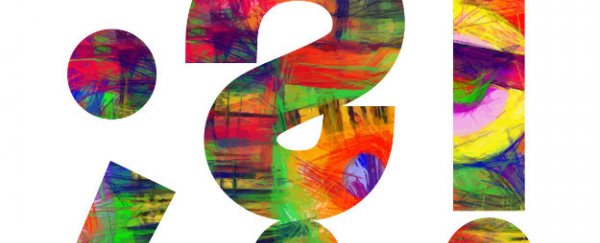For the first time, researchers in the UK have successfully trained people to experience a common form of synaesthesia - a rare genetic condition that's been linked to heightened creativity, particularly in the fields of music and visual art.
Experienced by just 4.4 percent of the global adult population - Pharrell Williams and Lady Gaga included - synaesthesia is a rare condition that causes the brain to confuse sensory information, so smells become linked to sounds and tastes to certain words. For example, the smell of fleshly baked cookies could invoke the sound of classical music, or the word "television" could taste like beef. One of the most common forms is called grapheme-color synesthesia, which causes individual written letters and numbers to take on a specific hue.
After a study carried out in the Netherlands a couple of years ago revealed that certain aspects of synaesthesia could be temporarily invoked through special training exercises, scientists in the UK set out to see if they could produce lasting effects in adult volunteers through long-term training. Led by neuroscientist Daniel Bor from the University of Sussex, the team recruited 14 participants to take part in a nine-week course that put them through daily half-hourly exercises that taught them 13 letter-colour associations.
Clare Wilson describes the results over at New Scientist:
By the end of the nine-week course, most of the volunteers had the bizarre experience of seeing text in the real world, on road signs, for instance, take on certain hues. "The colour immediately pops into my head," said a subject who experienced some of the strongest effects. "When I look at a sign the whole word appears according to the training colours."
As well as passing several lab tests of synaesthesia, nine of the 14 volunteers reported that they saw coloured letters when they read ordinary black text, to varying extents. Many of the participants were seeing strong effects by week five, and some were seeing coloured letters appear on a daily basis.
Any dreams of a new synaesthesia-driven career abstract painting were soon dashed, as the participants reported losing their new-found skills less than three months after the training stopped. According to Wilson, Bor thinks once the participants returned to reading letters only in black and white, their synaesthesia faed away. Perhaps, he said, if he taught them using a new language they don't often come across, such as Hebrew, the training might stick.
The results of the study were published in Scientific Reports.
Head to New Scientist to find out how you can teach yourself synaesthesia.
Source: New Scientist
